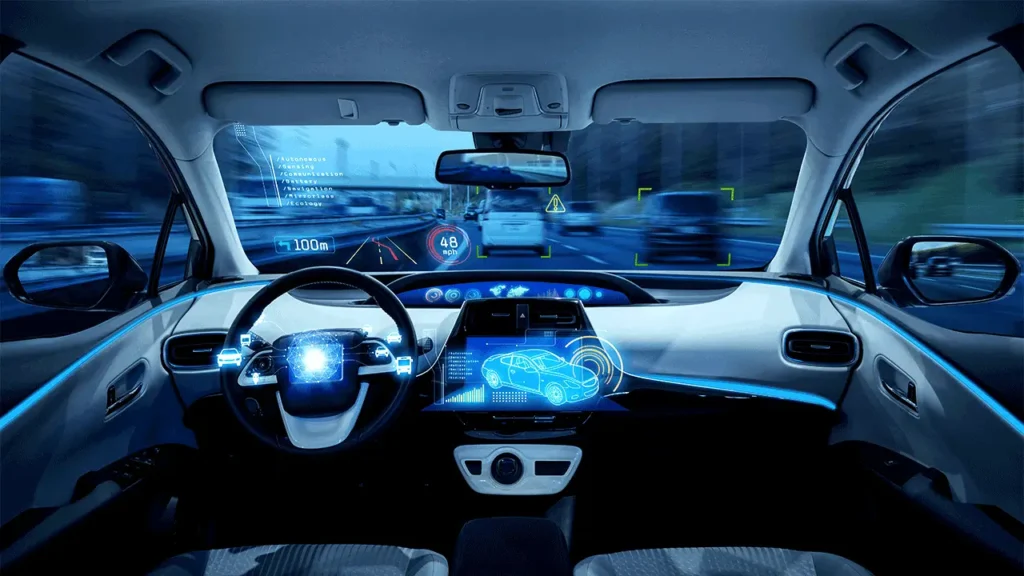Imagine a world where your next ride arrives with no driver, navigates traffic flawlessly, and drops you off while you relax or work. This is no longer science fiction—autonomous ride-sharing fleets are already being tested and, in some cities, actively used. In 2025, the transition from traditional ride-hailing to fully autonomous ride-sharing services is rapidly accelerating, powered by advancements in AI, vehicle autonomy, and smart urban planning.
Let’s explore how the future of ride-sharing with autonomous fleets is shaping the next era of personal and public mobility.
Introduction: The End of Human-Driven Mobility?
Traditional ride-sharing platforms like Uber and Lyft revolutionized mobility in the 2010s, but the next disruption is even bigger: removing the driver altogether. With self-driving cars now achieving high levels of autonomy, ride-sharing is poised to shift toward Mobility as a Service (MaaS) models that are safer, cheaper, and more scalable.
Autonomous ride-sharing promises:
- Reduced operational costs
- Improved safety outcomes
- 24/7 service availability without human fatigue
And in the years ahead, ride-sharing with autonomous fleets may become the default in urban transportation.
What Are Autonomous Fleets?
An autonomous fleet is a collection of self-driving vehicles operated under a unified control system, typically owned and managed by a tech or transportation company.
Key Features:
- 🚗 Level 4 or Level 5 autonomy (fully driverless, with no human input needed)
- 🌐 Connected to cloud platforms for monitoring, routing, and updates
- ⚙️ Managed by AI for scheduling, dispatching, and navigation
Unlike traditional taxis or ride-share models, these fleets operate independently, with minimal human intervention, and are designed for efficiency at scale.
The Role of AI in Autonomous Ride-Sharing
Artificial intelligence is the backbone of autonomous fleet management. It handles:
- 🧠 Route optimization using live traffic and road condition data
- 📊 Demand prediction based on time of day, location, and events
- 🚦 Decision-making in complex environments, such as intersections or pedestrian zones
- 🗺️ Fleet distribution to meet supply-demand gaps across neighborhoods
AI ensures that vehicles are where they’re needed, when they’re needed, reducing wait times and maximizing utilization.
Benefits of Autonomous Ride-Sharing Services
The shift to autonomous fleets brings a wide range of benefits:
- 💰 Lower ride costs: No need to pay a driver, reducing fares by 20–40%
- 🕒 24/7 availability: Vehicles don’t rest, enabling true round-the-clock service
- 🔒 Improved safety: AI never gets distracted, fatigued, or impaired
- 🚗 Less congestion: Smarter routing and fewer cars on the road thanks to optimized vehicle use
For cities and riders alike, this represents a giant leap forward in convenience, efficiency, and accessibility.
Environmental Impact and Urban Sustainability
Autonomous ride-sharing fleets—especially when electric—are poised to support major sustainability goals:
- 🌿 Lower emissions from efficient driving and reduced idling
- 🔋 Shared EV infrastructure that aligns with renewable energy sources
- 🛑 Fewer privately owned vehicles, cutting manufacturing and parking needs
In the long run, AI-managed ride-sharing will help cities achieve cleaner air, quieter streets, and smarter land use.
How Autonomous Fleets Will Change City Infrastructure
Cities will need to adapt to fully benefit from autonomous ride-sharing:
- 🚦 Smart intersections and traffic systems to coordinate with self-driving cars
- 📍 Designated pickup and drop-off zones, reducing curbside chaos
- 🚧 Reduced demand for parking lots, freeing land for green spaces or housing
Urban planners are already rethinking road layouts, zoning laws, and mobility hubs with autonomous mobility in mind.
Human Jobs and Economic Implications
The shift to driverless fleets raises questions about job displacement. However, it also opens up new opportunities:
- 👷 Fleet maintenance and supervision roles
- 🧑💻 Software, AI, and cybersecurity jobs
- 📞 Remote customer service and monitoring centers
While some driving jobs will be lost, new sectors in autonomous mobility are already emerging, requiring training and policy support.
Key Players in the Autonomous Ride-Sharing Race
Several companies are leading the global push toward autonomous fleets:
🚘 Waymo (Alphabet/Google)
- Operates fully autonomous ride-sharing services in Phoenix, Arizona
- Expanding into San Francisco and Los Angeles with rider-only vehicles
- Uses a combination of LiDAR, radar, and AI-driven neural networks
🚖 Cruise (General Motors)
- Testing and deploying autonomous fleets in multiple U.S. cities
- Focuses on urban ride-hailing with electric, driverless vehicles
- Known for its data-heavy simulation and decision-making AI
🚗 Tesla
- Uses its “Full Self-Driving” (FSD) package in beta for fleet readiness
- Aims to build a robotaxi network leveraging its existing owner fleet
- Relies on a vision-only system and Dojo AI training infrastructure
🚕 Uber ATG (now under Aurora)
- Focused on long-haul autonomous transport, but developing ride-sharing integrations
- Partnering with manufacturers to create custom robotaxi platforms
🌏 Baidu Apollo (China)
- Running autonomous taxi fleets in Beijing, Shenzhen, and Wuhan
- Government-backed with deep access to urban infrastructure
- Developing smart city integrations to support AI fleet navigation
These companies are not just experimenting—they’re laying the groundwork for full-scale, autonomous ride-sharing networks.
Integration with Public Transit Systems
One of the biggest opportunities lies in blending autonomous fleets with existing transit networks.
- 🛴 First-mile/last-mile coverage for subways and buses
- 🚌 AI systems suggest rides that align with bus or train schedules
- 🎫 Unified ticketing systems across fleets and public transit options
This hybrid model helps reduce car ownership and increases accessibility without overloading infrastructure.
Data, Privacy, and Cybersecurity Concerns
With constant monitoring, mapping, and tracking, autonomous fleets raise important questions:
- 🔐 Who owns the data? Location, travel history, and behavior are valuable and sensitive
- 💻 Are systems hackable? Cybersecurity becomes mission-critical in a driverless world
- 🤖 Can bias or error creep into AI decisions? Ethical AI development is essential
Companies must ensure data transparency, strong encryption, and oversight to build public trust in autonomous mobility.
Accessibility and Inclusivity in Autonomous Mobility
Autonomous fleets must work for everyone—not just the tech-savvy. Innovations include:
- ♿ Wheelchair-accessible robotaxis
- 🧓 Elderly-friendly entry/exit systems
- 🌐 Multilingual voice assistants
- 📱 Simplified booking through voice or tactile interfaces
These features ensure mobility equity and open the door for underserved groups to benefit from autonomous transportation.
Pilot Programs and Real-World Use Cases
Autonomous ride-sharing is already happening in select cities:
🇺🇸 Phoenix, Arizona (Waymo)
- Full public use of driverless vehicles via app
- Tens of thousands of rides completed with no safety driver
🇨🇳 Shenzhen, China (Baidu)
- AI-integrated robotaxi service operating alongside regular traffic
- Coordinated with smart traffic lights and 5G networks
🇦🇪 Dubai, UAE
- Government-backed plans to convert 25% of transportation to autonomous by 2030
- Testing autonomous shuttles in controlled zones
🇺🇸 San Francisco, California (Cruise)
- Public nighttime robotaxi testing
- Ongoing efforts to expand service hours and zones
These trials are proving that autonomous ride-sharing isn’t just a concept—it’s already working.
Public Trust and Regulation of Self-Driving Ride-Sharing
Gaining public acceptance is as crucial as technological success. Governments and companies must address:
- ✅ Licensing and testing standards
- ⚖️ Liability in the event of crashes or malfunctions
- 🗣️ Clear communication about safety and service options
As legislation catches up with innovation, transparent governance and responsible AI use will be key to mass adoption.
Challenges to Scaling Autonomous Ride-Sharing
Despite progress, several barriers remain:
- 🏙️ Urban infrastructure gaps (e.g., inconsistent road signage, lack of 5G coverage)
- 🌧️ All-weather performance—AI still struggles in heavy rain or snow
- 🧾 High costs of vehicle hardware like sensors and processing chips
- 👥 Public hesitation in trusting driverless vehicles
These challenges can be overcome—but collaboration across tech, government, and civil society is essential.
Future Predictions: What 2030 Might Look Like
By 2030, autonomous fleets could become the norm in many cities, delivering:
- 🚙 On-demand AI-driven vehicles available in seconds
- 🏙️ Redesigned cities with fewer parking lots and smarter traffic flow
- 🔋 Fully electric, zero-emission fleets contributing to climate goals
- 🧠 Hyper-personalized rides with in-cabin AI assistants, mood-based lighting, and entertainment
It won’t be long before calling a driverless car feels as routine as ordering food online.
Conclusion
Autonomous ride-sharing isn’t a dream of the distant future—it’s a rapidly unfolding reality. As AI, robotics, and urban design converge, we’re entering a new era of transportation: one that is smarter, cleaner, and more accessible than ever before.
Whether you’re commuting, exploring the city, or managing a fleet, expect to see driverless vehicles become part of daily life—sooner than you think.


